MUSEUM, exceptional zoomorphic embossed and hammered silver, and gilded Rython (protome of ram or ibex)
Persian Achaemenid art (6th - 5th BC)
Very elegant custom-made pexyglas base
Condition: some minor dents, slight cut and deformations at the base / opening (please check photos)
Wear of the thick gilding covering the object at the level of the muzzle and oxidation traces
It stay excellent condition considering the age and its raw material, very malleable.
Dimensions: 16cm height and diameter 6.5cm approx
Weight 141g
The rhython is a cup in horn shape used for drinking but also for some ceremonies and religious rituals such as during libations.
In terracotta or metal, measuring approximately around 25 centimeters height, which is represented in the horn form of a horn with or without handle, with a bottom opening through which the liquid (almost always wine) flows and from which the end ends with an animal or human head. It was mainly made by Thracians and Romans during the 6th and 5th centuries BC. AD and by Persia, then spread in Hellenistic space.
In 3rd century BC, Chameleon of Heraclea and Teophrastus, in their Treatise on Drunkenness, write that the vase called rhyton is only given to heroes. T
he Achaemenid Empire was the first of Persian empires to rule over much of Middle East during 1st millennium BC. This is one of the largest Empires to exist in Antiquity, extending north and west in Asia Minor; east to present-day Afghanistan and part of Pakistan, and south and southwest over present-day Iraq, Syria, Lebanon, Israel and Palestine, Jordan, northern Saudi Arabia, Egypt, and as far north as Libya.
The name "Achemenid" came from the founding clan which is released around 550 BC from the tutelage of Medes, previously their sovereigns, as well as to the great Empire which then results from their domination. The Empire founded by Achaemenids seizes Anatolye by defeating Lydia, then conquers the Neo-Babylonian Empire and Egypt, then uniting the oldest civilizations of the Middle East in a single political entity in a lasting way . The Achaemenid Empire twice threatened ancient Greece and collapsed, defeated by Alexander the Great in 330 BC, not without bequeathing a notable part of its cultural and political features.
The art of metal take a privileged place in the artistic creations of the Achaemenid period. A good variety of metals were used, more common than gold or bronze. These metal productions are characterized in particular by the use of animal motifs and bestiaries. Many pieces of plates, dishes, cups, etc., have been discovered adorned with animal scenes: hunting scenes of predatory animals, games between domestic animals or symbolic animals. Other metal products, such as jewelry, are also decorated with animal figures. Achaemenid art is however particularly distinguished for the quality of its goldsmith's work, production in gold or silver, sometimes covered with silver. We find for these stylized glasses or rhythms zoomorphic shapes, often deer with these very stylized horns.
The most famous is the gold one kept at the Tehran National Museum, but stylistically very close to our piece presented here (plaese check last photos)




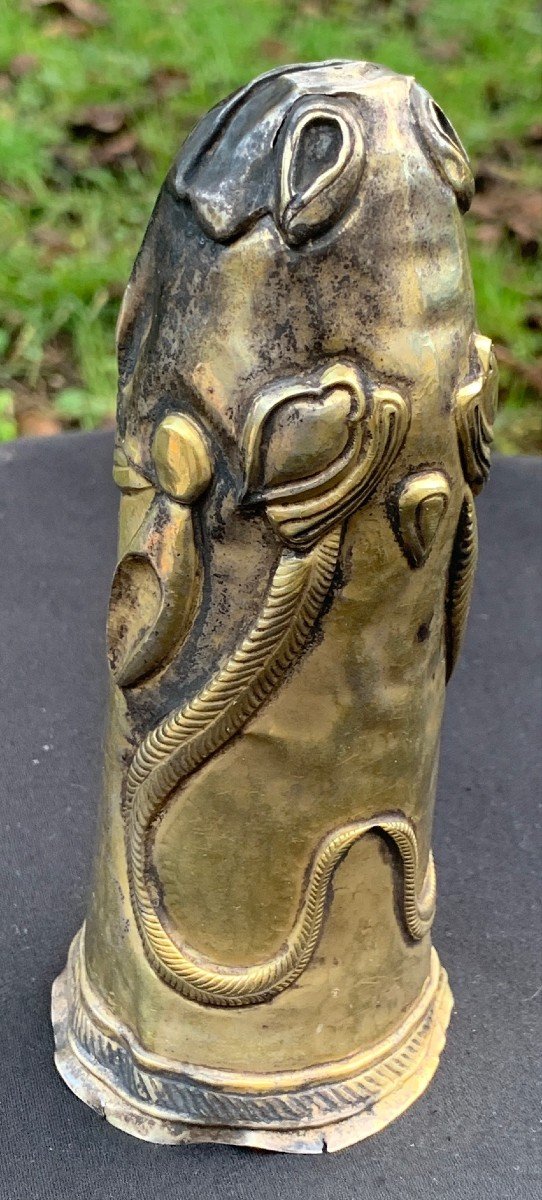


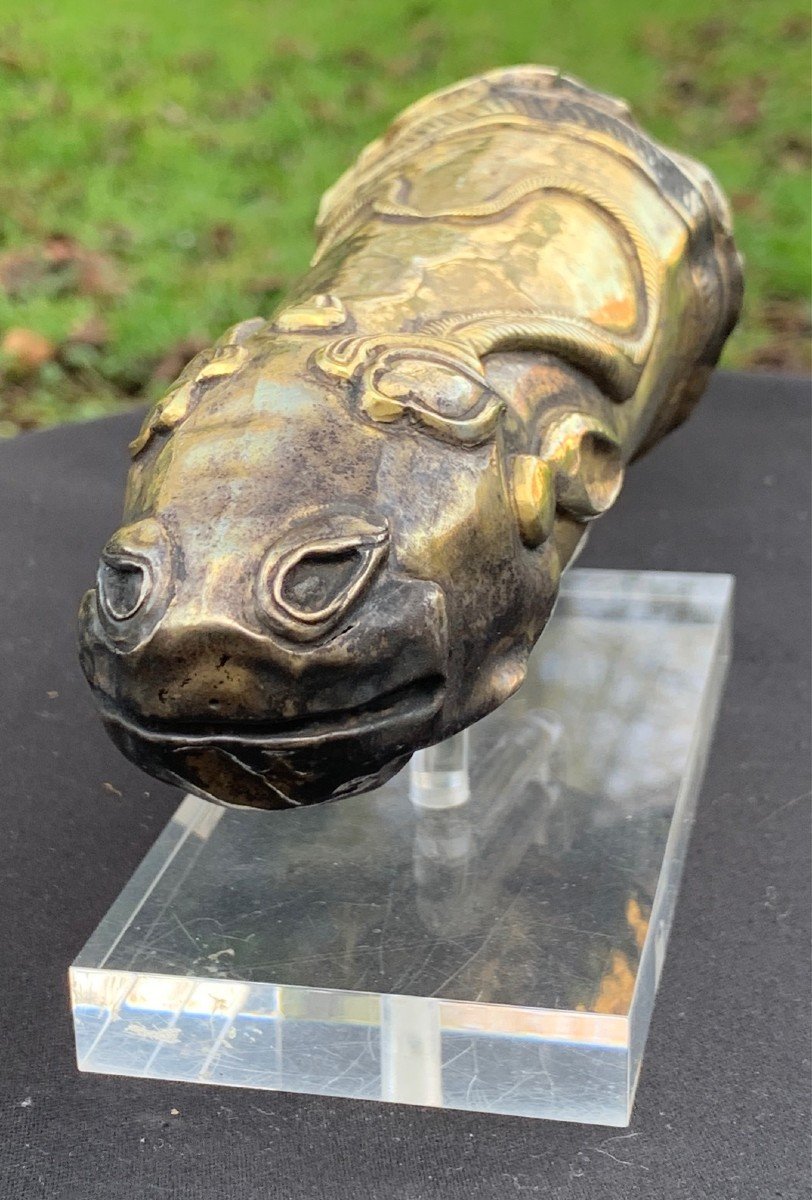
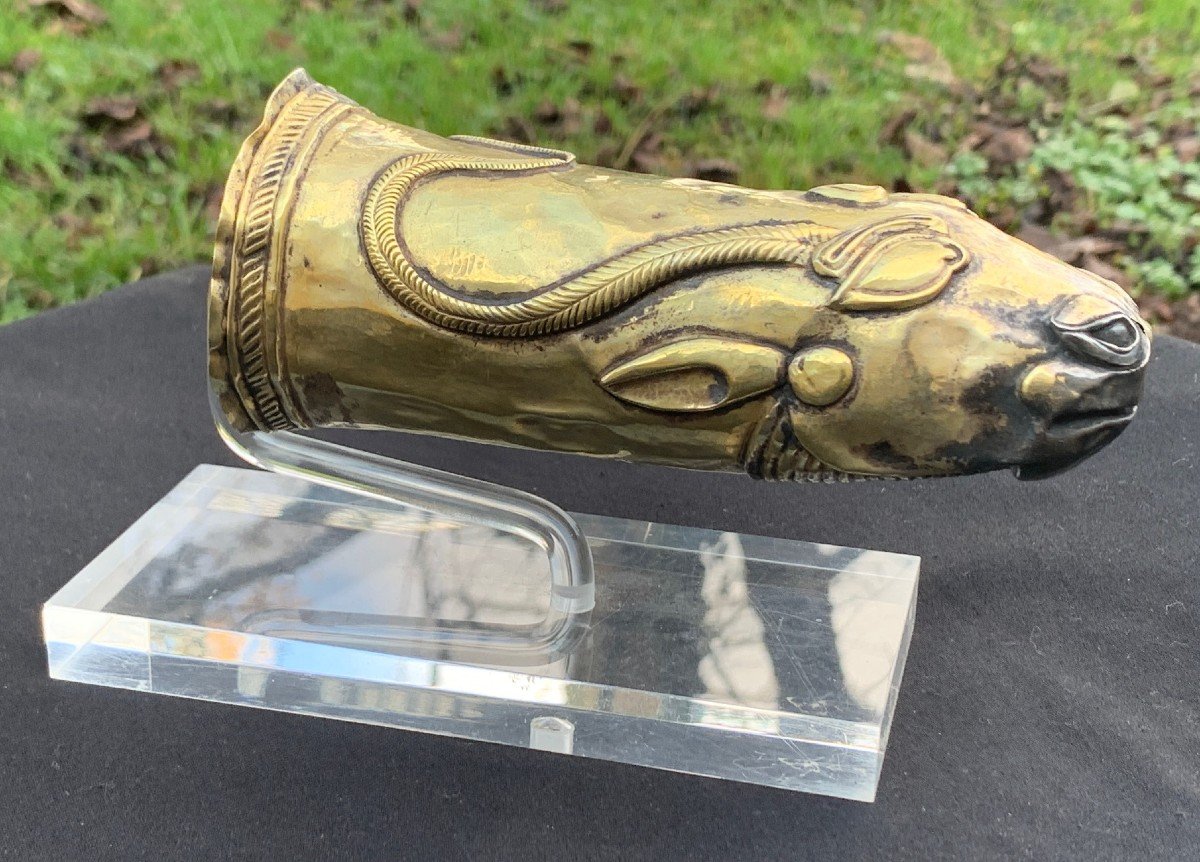
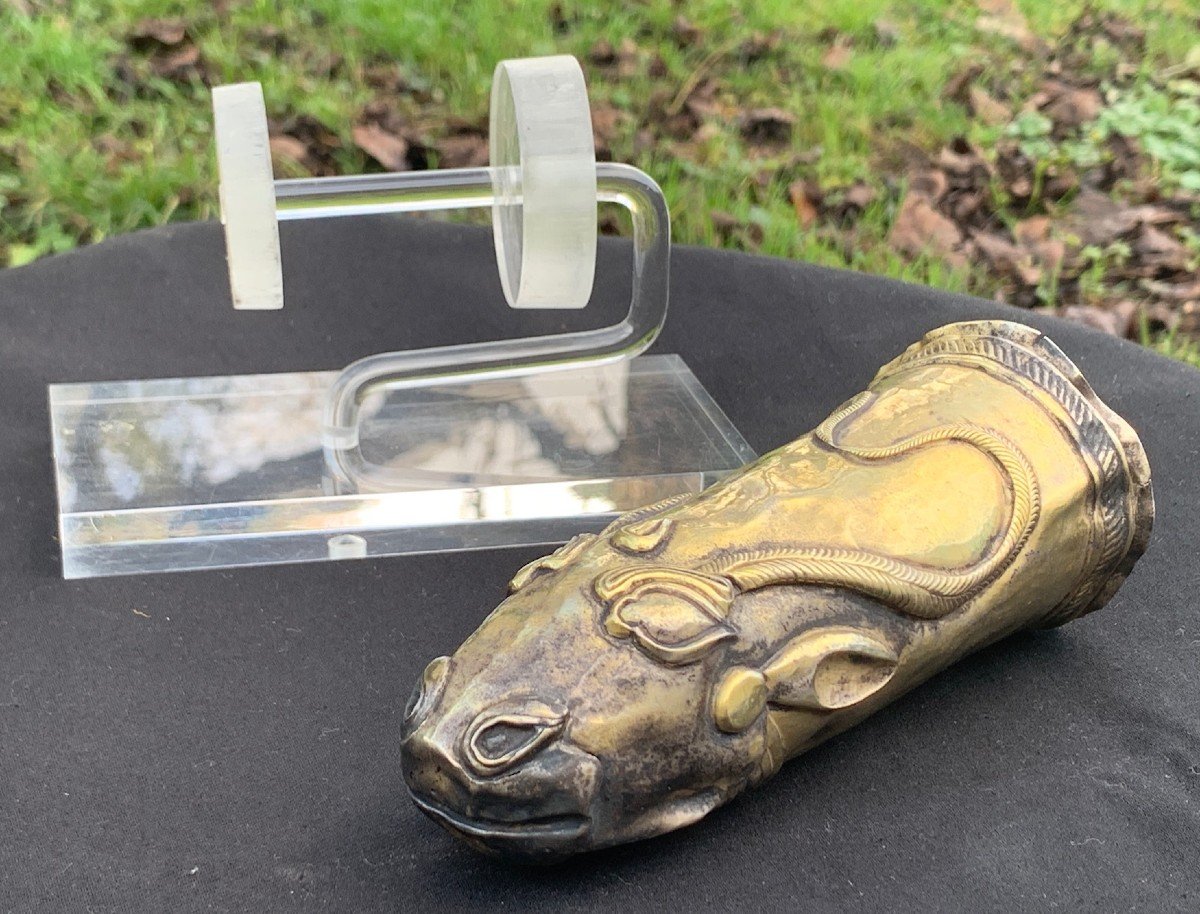
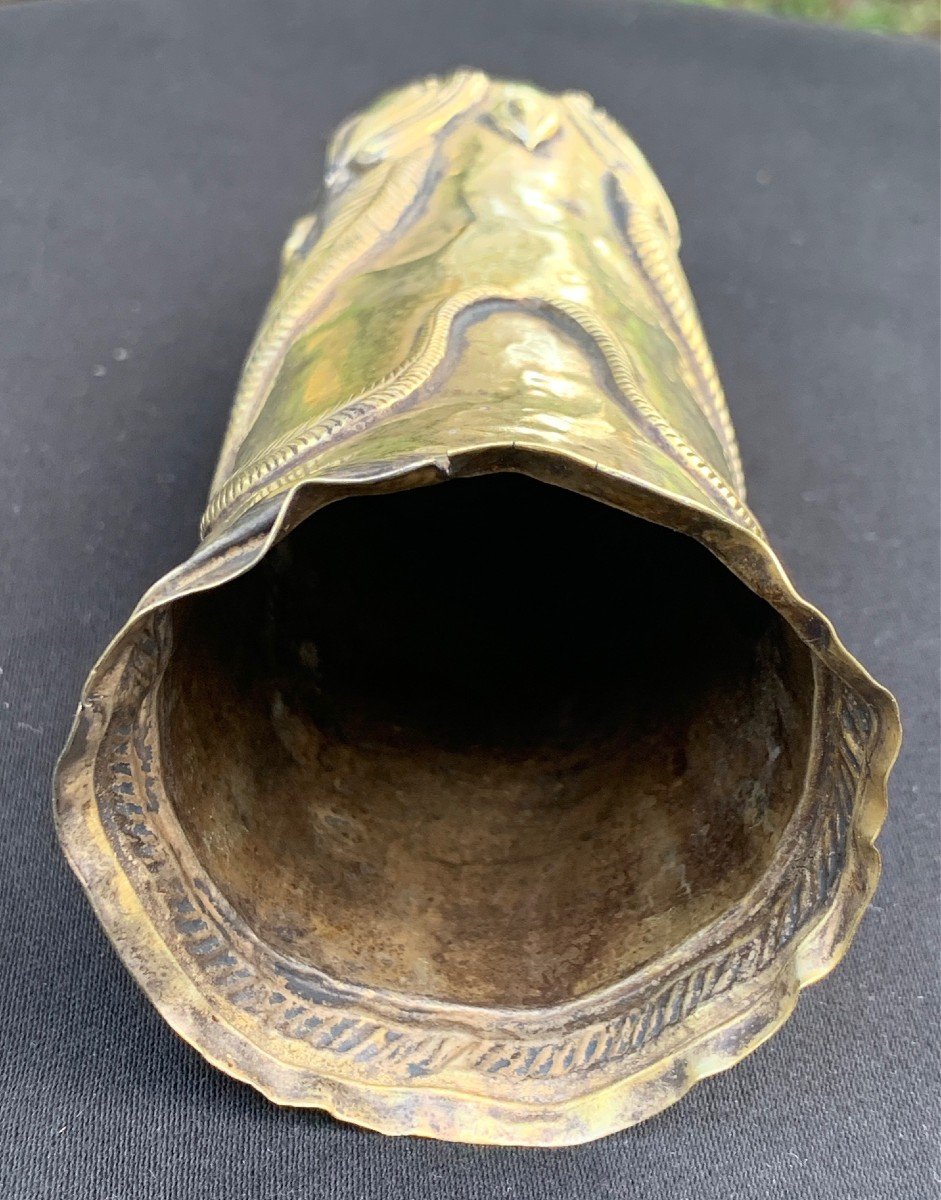

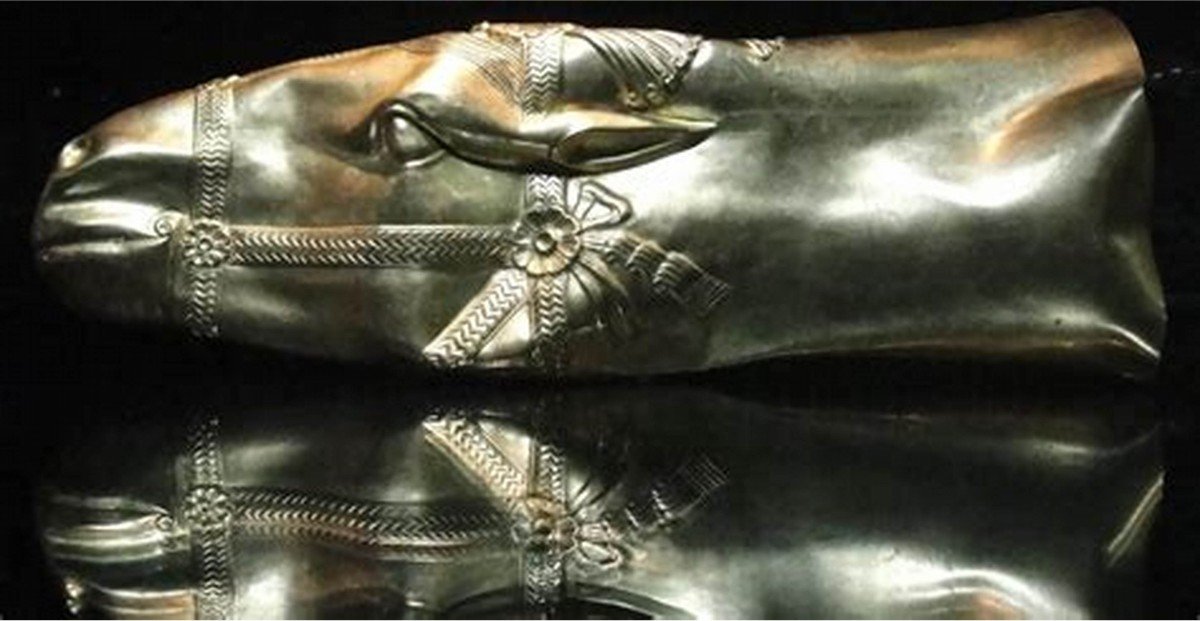















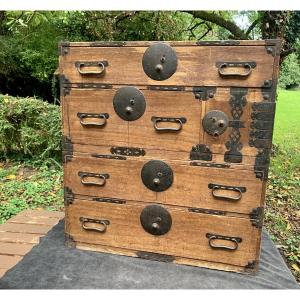


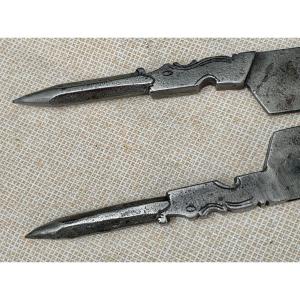
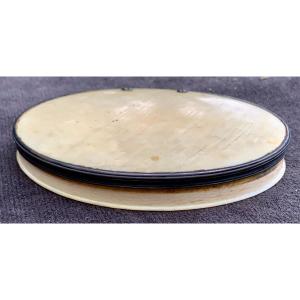
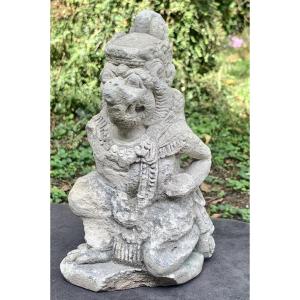
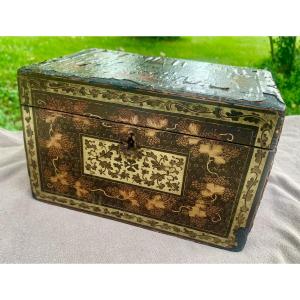
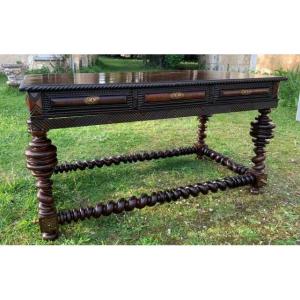

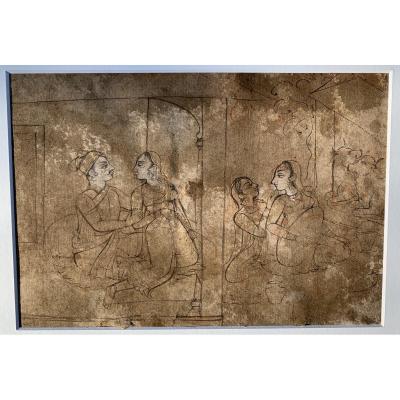

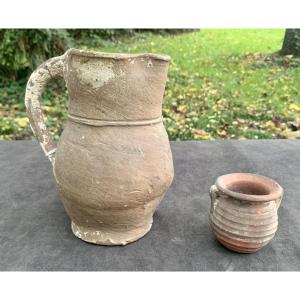









 Le Magazine de PROANTIC
Le Magazine de PROANTIC TRÉSORS Magazine
TRÉSORS Magazine Rivista Artiquariato
Rivista Artiquariato